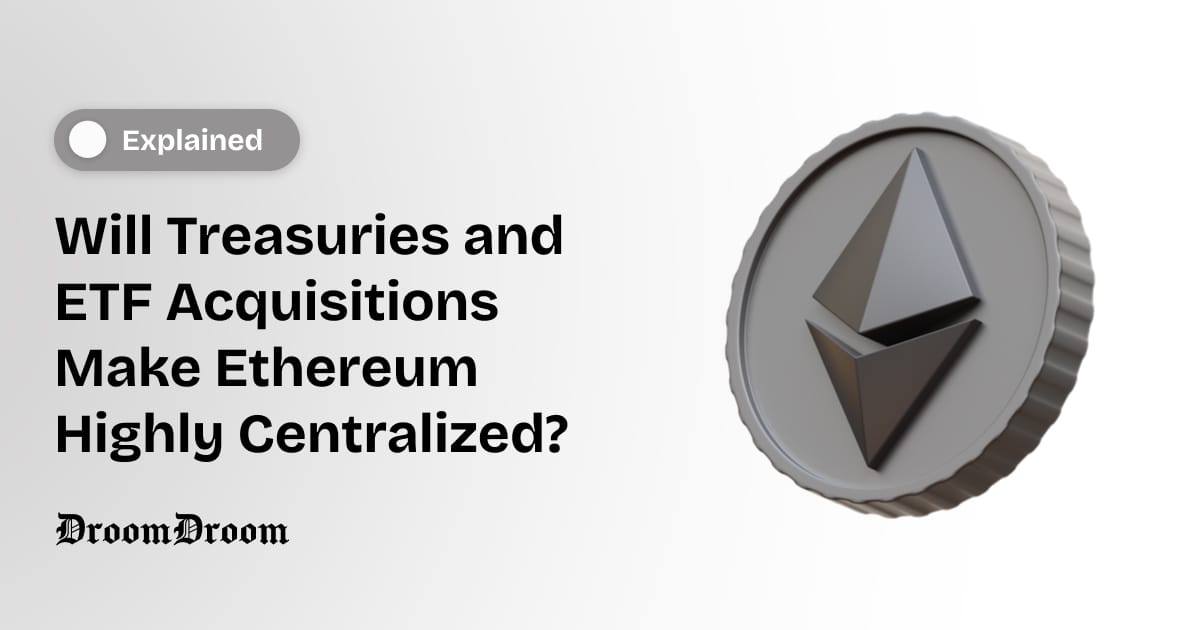- DroomDroom Newsletter
- Posts
- Will Institutional Ethereum Holdings Threaten Network Decentralization?
Will Institutional Ethereum Holdings Threaten Network Decentralization?

To dive deeper, check out the complete article from the original source:
https://droomdroom.com/will-treasuries-and-etf-acquisitions/
The rapid rise of Ethereum treasuries and potential ETF acquisitions has sparked debate over whether institutional dominance could make the network more centralized. Treasuries, large corporate entities with deep liquidity, have been accumulating Ethereum since 2024, stabilizing its price after ETF failures and a prolonged market decline. However, this growing concentration of holdings raises valid concerns about validator dominance and governance control.
Critics argue that treasuries could centralize validation power by running large validator nodes, each requiring substantial ETH stakes, thereby gaining more influence over transaction verification and governance voting. Yet, Ethereum’s robust decentralized infrastructure mitigates these risks. The network already hosts over a million validators, and upcoming upgrades, allowing participation with as little as 1 ETH, will further democratize access, dispersing power among a wider group of participants.
From a governance standpoint, increased validator diversity and retail participation act as natural checks against monopolization. Historically, despite Ethereum being whale-dominated, no significant governance manipulation has occurred. Moreover, treasuries’ motives appear economically aligned with Ethereum’s success. Their investments aim for long-term value appreciation and ecosystem growth through upcoming innovations such as Sharding and Verkle Trees, rather than control or exploitation.
Without these institutional inflows, Ethereum might have continued its downward trajectory, possibly dropping to $1,000 by late 2025. Treasury accumulation not only stabilized prices but also restored investor confidence, reinforcing Ethereum’s position as the foundation of decentralized finance while preserving its decentralized ethos through structural resilience.